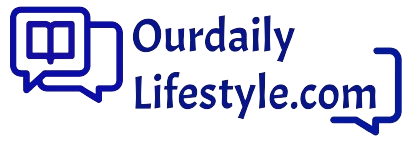Table of Contents
My Journey to Becoming a Full-Time Blogger. Becoming a full-time blogger was not a straightforward path. It involved passion, persistence, and a lot of trial and error. Blogging may seem simple, but creating a sustainable career out of it takes time, dedication, and strategic thinking. This article delves into my journey from being a casual writer to a full-time blogger, detailing the milestones, lessons, and struggles I faced along the way.
Early Interest in Writing
Like many writers, I began with a love for storytelling. From a young age, I was constantly journaling, scribbling ideas, and expressing myself through words. This early interest wasn’t about blogging, but it laid the groundwork for my future career. I spent hours exploring books, magazines, and online forums, developing a sense for what resonated with readers and how words could be structured to tell a story or convey an idea.
Discovering Blogs
In the early days of the internet, blogging was still a new concept. My first encounter with blogs was in high school when I stumbled upon personal blogs on topics I enjoyed. I realized that blogging was a way to connect with people across the world and share knowledge, ideas, or stories on an accessible platform. By reading these blogs, I learned what made content engaging and began envisioning what my blog might look like if I ever created one.
Starting My First Blog
With excitement and a dose of nerves, I launched my first blog. The platform was free, simple, and minimalistic, but it was enough to start experimenting. I began by writing about topics I loved, like travel, lifestyle, and productivity. I had no formal knowledge of digital marketing or SEO at this point, so I focused solely on the content.
Overcoming Challenges as a Beginner
Starting a blog came with numerous challenges:
- Technical Skills: I had to learn basic web design, navigation, and formatting, which was tricky without a background in web development.
- Consistency: Finding time to write consistently was challenging, especially since I was balancing a full-time job.
- Imposter Syndrome: I frequently doubted whether anyone would want to read my content or if I could succeed as a blogger.
Despite these hurdles, I kept pushing forward. Writing became a way to express myself and connect with a small, loyal audience that began to form around my content.
Learning About SEO and Digital Marketing
After a few months of blogging, I realized that creating quality content alone wasn’t enough to attract readers. I needed to understand how to make my content visible. This led me down the path of learning about SEO (Search Engine Optimization) and digital marketing. I started with the basics:
- Keyword Research: Identifying popular topics and keywords that readers were searching for.
- On-Page SEO: Optimizing titles, meta descriptions, and headers to make my content more search-friendly.
- Link Building: Building connections with other bloggers to increase my blog’s authority and visibility.
The more I learned, the more I noticed improvements in my blog’s traffic. SEO became an essential tool in building my online presence, and I soon began to see growth in my readership.
Building My Brand and Expanding My Niche
In the early days, my blog was a mix of many interests. But as I gained more readers, I realized the importance of niching down. I focused my blog on specific themes, which helped me build a brand identity and allowed readers to know what to expect. This transition was challenging because it meant letting go of certain topics, but it was essential for growth.
Creating a Consistent Content Calendar
To maintain consistency, I created a content calendar. This allowed me to plan my blog posts in advance and stay organized. Planning posts based on trends, seasonal interests, and reader feedback helped keep my content relevant. Sticking to a posting schedule also built credibility with my audience, as they could rely on me for regular content.
Monetizing the Blog
As my blog grew, I realized there was potential to earn from my passion. I explored various monetization methods, testing what worked and what didn’t.
Affiliate Marketing
Affiliate marketing was my first revenue stream. I joined affiliate programs related to my niche and began integrating product recommendations naturally into my content. I focused on products I genuinely used and believed in, which kept my recommendations authentic and helped build trust with readers.
Sponsored Content and Collaborations
With an engaged audience, I started receiving offers for sponsored posts and collaborations. This was a significant milestone as it validated my blog’s influence. However, I was selective about the partnerships I accepted, ensuring they aligned with my brand and offered value to my audience.
Offering Services and Products
Eventually, I expanded my offerings to include services, such as content creation for other websites, and digital products like e-books. Diversifying my income streams reduced dependency on one revenue source and allowed for more sustainable growth.
Growing My Audience
While monetizing my blog was essential, growth remained my top priority. I experimented with different ways to increase my blog’s reach.
Social Media Marketing
Using social media to promote my blog posts was a game-changer. Each platform had its strengths:
- Instagram: For visual storytelling and connecting on a more personal level.
- Twitter: For quick updates, sharing insights, and engaging in trending discussions.
- Pinterest: For sharing content in my niche, which helped drive significant traffic to my blog.
Social media allowed me to reach a broader audience, and by sharing insights and snippets of my blog, I built a community that followed my blog and social channels.
Email Marketing
Starting a newsletter was one of the best decisions I made. With email, I could communicate directly with readers who genuinely wanted to hear from me. I used it to share updates, exclusive content, and special offers. The email list became one of my most loyal and engaged audience segments, and it offered a reliable source of traffic.
Transitioning to Full-Time Blogging
After years of blogging part-time, my income reached a point where I could consider blogging as a full-time career. This was both exciting and daunting. The transition involved a lot of planning, saving, and budgeting to make sure I could sustain myself. Going full-time required taking my blog’s operations more seriously, implementing systems, and setting financial goals.

Setting Goals and Scaling Up
As a full-time blogger, I set goals to grow my income and expand my reach. This meant increasing the frequency of my posts, outsourcing tasks when possible, and continually refining my content strategy. I also focused on building passive income through digital products and affiliate marketing, allowing me to earn even when I wasn’t actively working.
Lessons Learned Along the Way
The journey to becoming a full-time blogger was filled with valuable lessons:
- Patience is Key: Success in blogging doesn’t happen overnight. It requires dedication, consistency, and patience.
- Authenticity Matters: Readers connect with authenticity. Staying true to my voice and passions helped me build trust and foster a loyal audience.
- Adaptability: The digital landscape is constantly changing, and staying relevant means adapting to new trends, platforms, and strategies.
- Community is Everything: Blogging isn’t a solo journey. Connecting with other bloggers, networking, and collaborating helped my blog grow and enriched my experience.
- Investing in Learning: Continuous learning, whether in SEO, digital marketing, or content creation, was essential in driving my blog’s success.
Challenges of Full-Time Blogging
Despite the benefits, full-time blogging comes with its own set of challenges:
- Inconsistent Income: Blogging income can fluctuate, so managing finances and diversifying income streams was critical.
- Work-Life Balance: Working from home blurred the line between personal and professional life. Establishing a routine helped me maintain balance.
- Content Burnout: Creating content regularly was challenging, but taking breaks and finding inspiration from my community helped me stay motivated.
Looking Ahead: Goals for the Future
As a full-time blogger, my goal is to continue growing and adapting. I plan to expand into video content, create more in-depth digital courses, and explore emerging platforms to connect with my audience. Staying informed about the latest trends and continually providing value to my readers remains my focus as I strive to make my blog sustainable in the long term.
The journey to becoming a full-time blogger was a winding path with ups and downs, but it was worth every challenge. Blogging has provided me with a creative outlet, a means of financial independence, and the opportunity to connect with people worldwide. Through passion, persistence, and a commitment to growth, I turned my blog into a fulfilling career that I’m proud of. For anyone considering this path, remember that success is possible if you stay true to your voice, put in the hard work, and keep learning along the way.
FAQs
1. How long does it take to become a full-time blogger?
There is no set timeline; it can take anywhere from a few months to several years, depending on the niche, dedication, and monetization strategy.
2. What are some essential skills for successful blogging?
Writing, SEO, digital marketing, and networking are all critical. Learning these skills can help drive growth and engagement on your blog.
3. Can I make a stable income from blogging?
Yes, but it requires time, multiple income streams, and consistency. Diversifying income with affiliate marketing, ads, sponsored posts, and products can create more stability.
4. How much traffic is needed to make a living from blogging?
It varies based on monetization. For instance, affiliate marketing can generate income with moderate traffic, while ad revenue requires higher traffic levels.
5. How do I choose a niche for my blog?
Choose a topic
you’re passionate about that also has audience interest. Research keywords to gauge competition and potential demand within your niche.
6. Do I need to be on social media to succeed as a blogger?
While not strictly necessary, social media can significantly boost traffic and engagement by helping you reach a broader audience.


